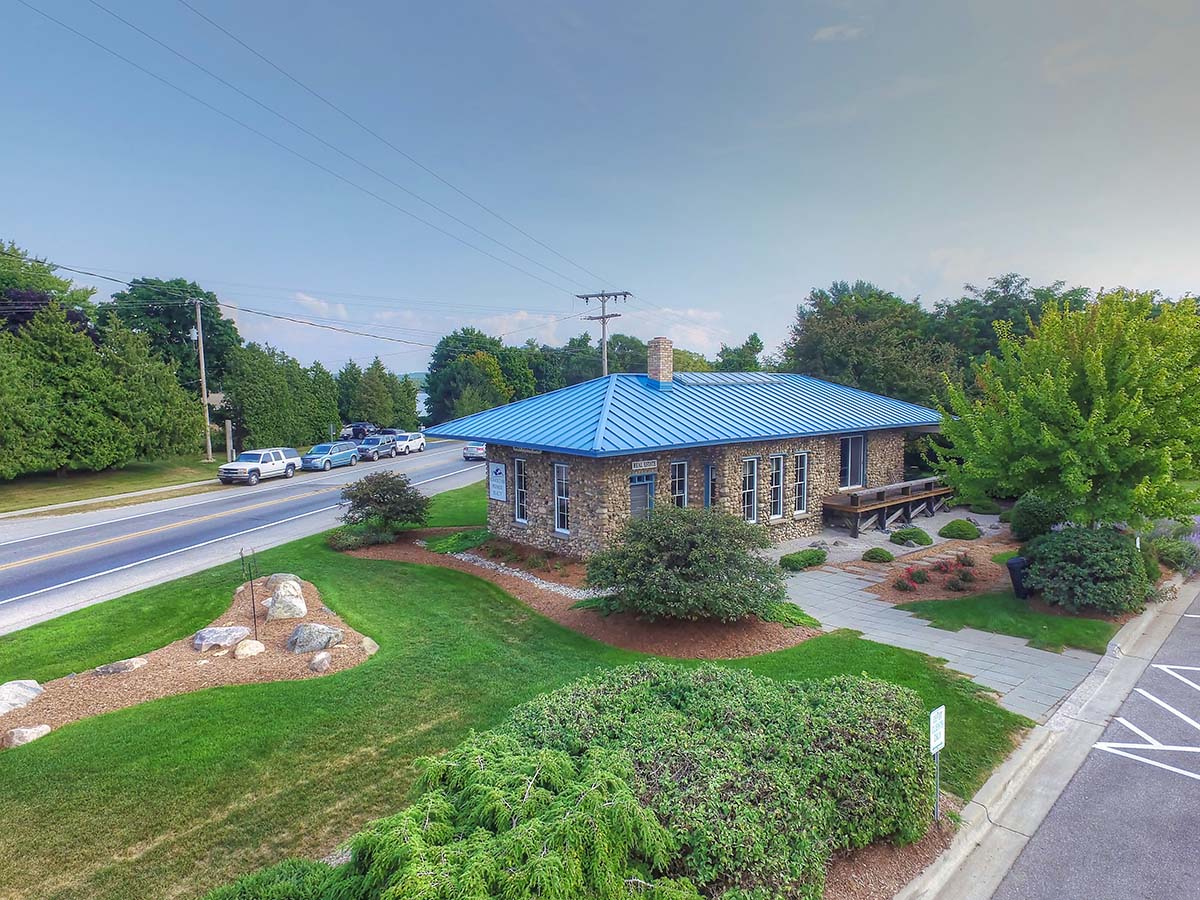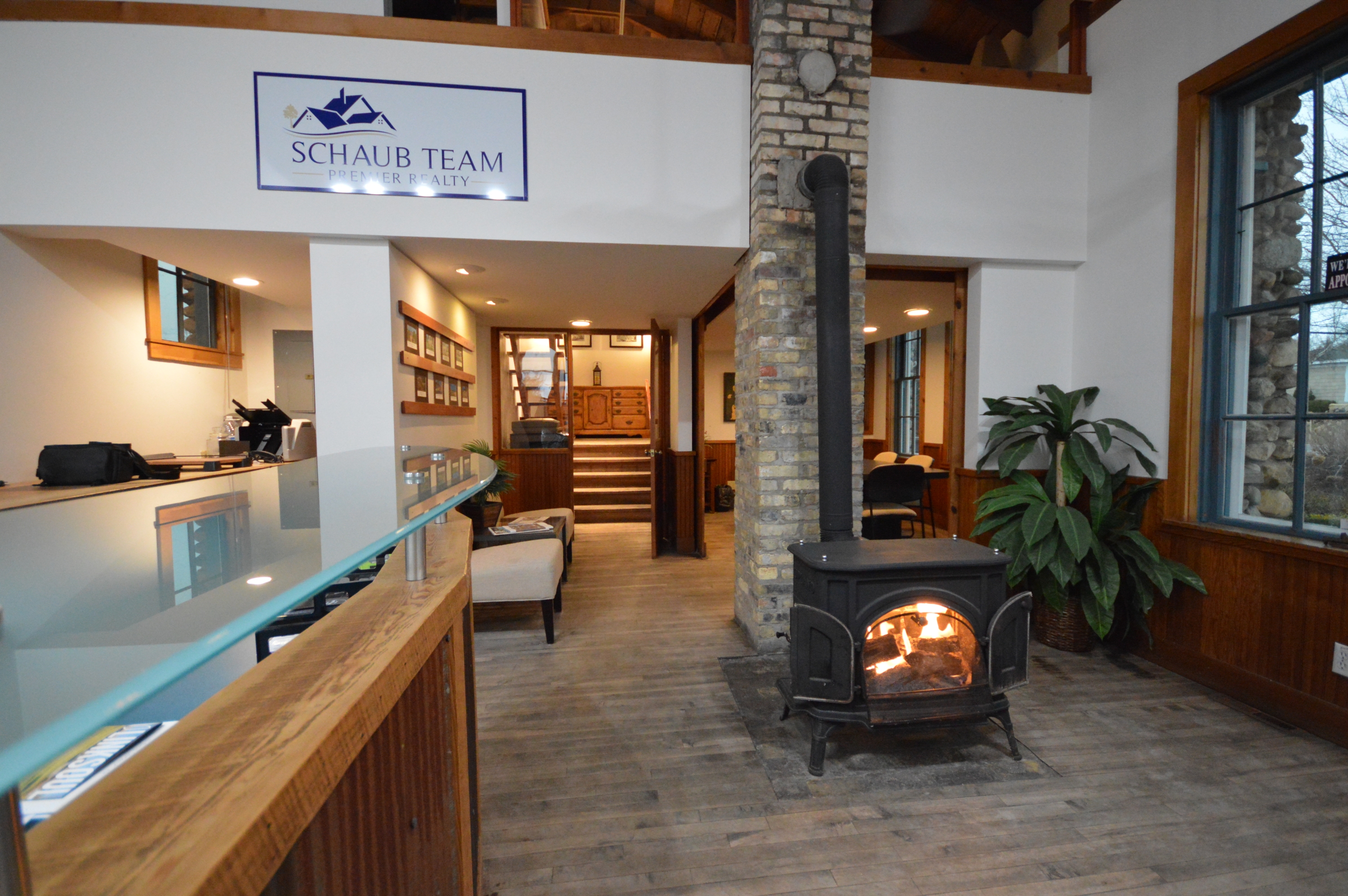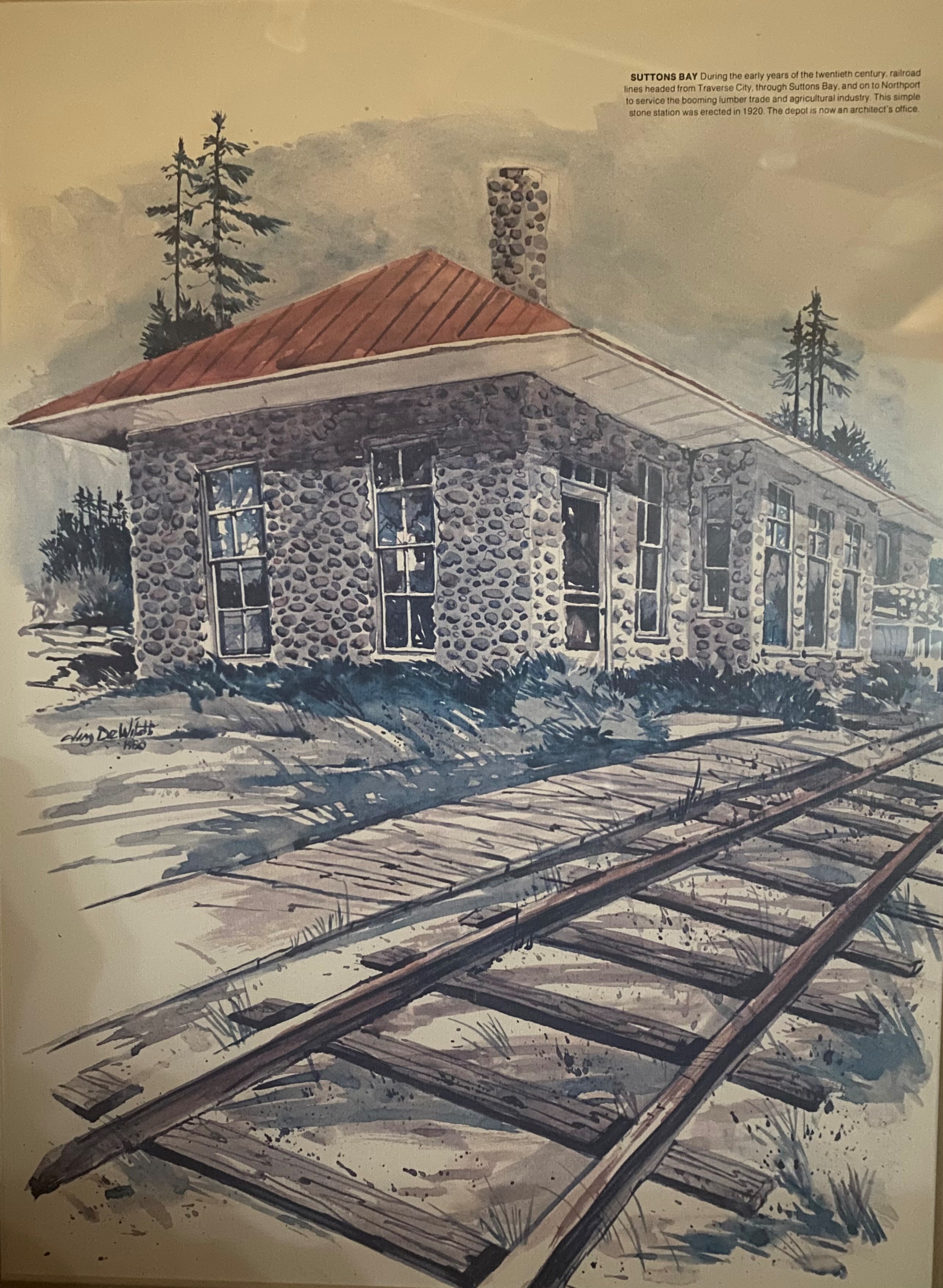Schaub Team Blog
Landmarks of Leelanau, Part Two
Posted by Jamie Jewell on Apr 10 , 2023 - 09:31 am

Article featured in The Leelanau Ticker on April 7, 2023. Written by Ross Boissoneau
The history of Leelanau continues to grow, with landmarks taking on new lives and new roles over the years. In Part Two of our series, here are three more familiar sights which have seen many uses through their time.
Riverside Inn, Leland
From humble beginnings as a bathhouse and dance hall to its current status as a community landmark with food and wine, the Riverside Inn has been serving Leland and beyond for more than a century. Its significance has seen it listed on the National Register of Historic Places, yet it’s brand new again, thanks to a partnership with Fernhaus hospitality group and a refresh of its rooms and offerings.
It was back in 1902 that Jacob Schwarz constructed the original inn. He soon converted the nearby bathhouse into a dance hall. When the inn was destroyed by fire in 1924, rather than rebuilding it, the owners (Schwarz’s daughters Blanche and Anna) modified the dance hall, moving it to face the river and adding an upper story.
Fast forward to 2021. Kate Vilter, who had purchased the property with her mother Barbara in 1997, sold it to a group of local investors. That’s when Fernhaus came on board. “We started working on it at the end of 2021,” says Fernhaus President Kelsey Duda. A rebranding and renovation extended to adding another guest room, bringing the total to five.
Any surprises along the way? As with any building that old, the answer is yes. The biggest one: “The guest room subfloor was made from logs,” Duda says wryly.
Now everything old is new again: Duda says the refresh has extended to the culinary side as well, with a new chef. The Riv, as locals refer to it, is currently open Wednesday-Sunday 4-9. “It’s exciting,” Duda says.
Leelanau Transit Company Suttons Bay Depot
 There likely aren’t many real estate brokerages that can claim being designated a Michigan State Historic Site and listed on the National Register of Historic Places. One that can is the home of Schaub Team Premier Realty. The company’s Suttons Bay office is located at 101 S. Cedar Street, in the former Leelanau Transit Company Suttons Bay Depot, also known as the Suttons Bay Railroad Depot. “I call it the Times Square of Suttons Bay. It’s one of a kind, and good (location) to serve Leelanau and Grand Traverse,” says Roger Schaub, co-owner.
There likely aren’t many real estate brokerages that can claim being designated a Michigan State Historic Site and listed on the National Register of Historic Places. One that can is the home of Schaub Team Premier Realty. The company’s Suttons Bay office is located at 101 S. Cedar Street, in the former Leelanau Transit Company Suttons Bay Depot, also known as the Suttons Bay Railroad Depot. “I call it the Times Square of Suttons Bay. It’s one of a kind, and good (location) to serve Leelanau and Grand Traverse,” says Roger Schaub, co-owner.
 Like many spots throughout the region, it owes its history to the lumber industry. Harry C. Sutton, the namesake for the village and township, arrived in 1854 with a crew of woodsmen to supply fuel for passing wood steamboats. To access the lumber and the Northport-Manistique car ferry, the Traverse City, Leelanau, and Manistique Railroad was laid down in 1903. The line was sold in 1908, leading to the car ferry service ending. Over the following years, the railroad was operated by several companies, the last being the Leelanau Scenic Railroad, which ran from 1989 to 1995. That year the corridor was sold by CSX Transportation to the Leelanau Trails Association to establish today’s Leelanau Trail.
Like many spots throughout the region, it owes its history to the lumber industry. Harry C. Sutton, the namesake for the village and township, arrived in 1854 with a crew of woodsmen to supply fuel for passing wood steamboats. To access the lumber and the Northport-Manistique car ferry, the Traverse City, Leelanau, and Manistique Railroad was laid down in 1903. The line was sold in 1908, leading to the car ferry service ending. Over the following years, the railroad was operated by several companies, the last being the Leelanau Scenic Railroad, which ran from 1989 to 1995. That year the corridor was sold by CSX Transportation to the Leelanau Trails Association to establish today’s Leelanau Trail.
While the primary freight consisted of forest products, it also hauled potatoes, wheat, rye, oats, and fruit. The single-story Arts and Crafts-style building is built of rounded cobblestones; Schaub says he’s heard (though he can’t confirm) it was built with stones the farmers whose products were hauled on it had pulled from their fields.
Since the railway’s demise, the building has hosted an architectural firm and title company before becoming home to Schaub’s real estate company.
Schaub, who’s descended from some of the original farmers who decamped from North Manitou to the mainland, appreciates the history and is always interested in getting copies of historical photos of the building to display. “It’s an architectural treasure,” he says. “We’re never leaving.”
Bingham District No. 5 Schoolhouse
Once a schoolhouse, now a township office, and a historic treasure. That’s the short version of the story of Bingham Township Hall.
The village of Bingham came to life during the lumber boom of the 1870s and 1880s. The little farm community was awarded a post office in 1878. In 1881, a sawmill was built on the east shore of Lake Leelanau by Boone and Johnson, the Boones being descendants of Daniel Boone.
It grew to a town of more than 30 houses, a saloon and dance hall, a blacksmith shop, and a general store, with three boarding houses for the mill workers. It prospered as long as the lumber supply did, but when the forests were depleted in the early 1900s, the village’s population declined; the post office closed down in 1908.
The schoolhouse was built in 1877, a replacement for the original log schoolhouse built seven years earlier. It was used for grades 1-8 through the rest of the 1800s. As the population declined, so too did the need for a school, and after World War II area school districts were consolidated and the Bingham District No. 5 Schoolhouse was closed.
The building became the home of the township offices and hall and was renovated in 1987 to reflect its original look. Midge Werner, Bingham Township supervisor, says the two-room building serves the township well, with the hall serving as its meeting room and a voting precinct. “It feels historic, like an old school house. We have a few of the old desks and a corner with bookshelves and some books (from when it was a school) that were in the basement,” she says.
The building was designated a Michigan State Historic Site in 1987 and was listed on the National Register of Historic Places in 1991. It’s one of only a few surviving buildings associated with the once-thriving sawmill village of Bingham.

Comments
No comments.
Post a Comment